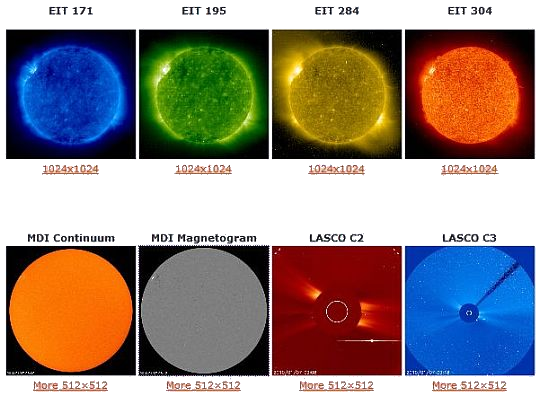 I have programmed several favorite websites (other than the blogs) that I like to visit daily. One of those is the NASA Solar and Heliospheric Observatory (SOHO) website.
I have programmed several favorite websites (other than the blogs) that I like to visit daily. One of those is the NASA Solar and Heliospheric Observatory (SOHO) website.
A favorite feature of mine, is the Very Latest SOHO Images page. On this page, I can see the solar disc in four different Extreme ultraviolet Imaging Telescope (EIT) wavelengths of light, two images (Continuum and Magnetogram) from the Michelson Doppler Imager (MDI), and two fields of view from the Large Angle and Spectrometric COronagraph (LASCO).
The Latest Images page is where I can see what’s happening on and around the Sun in near real time. Today’s EIT images tell me that there are active regions on both the left and right sides of the disc. The active region on the right will be rotating out of view soon, while the one on the left will move toward the center of the disc. The MDI images reveal no large sunspots – the remnants of sunspot 1035 are just coming into view in the upper left. The LASCOs reveal a couple of interesting things – there are Coronal Mass Ejections associated with both active regions seen in the EIT images and the planet Mercury passed in front of and below the Sun a few days ago.

Did you see the comet crashing into the Sun?
I wonder how significant a Sun without sun spots means?
I did see that little video they had on spaceweather.com – they say that happens a lot.
Sunspots have always been linked to climate change. I wrote about it in Correlating Sunspots to Global Climate that I posted back in August of 2006.